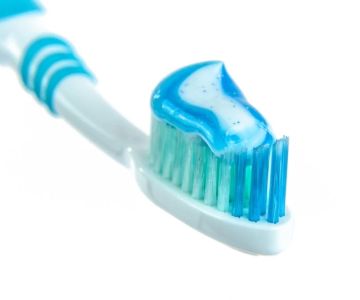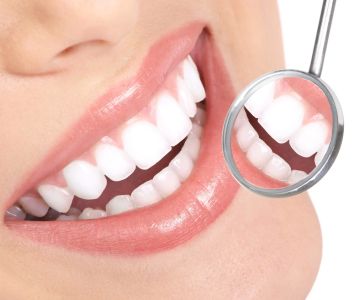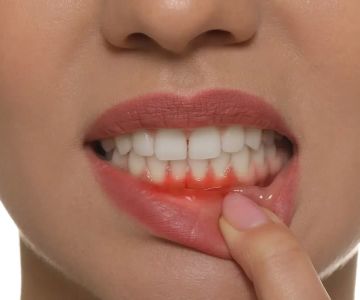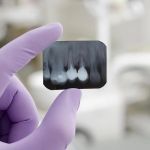For many people, noticing a lump in or around their gums can be alarming. Questions about whether these lumps signify a serious health concern might quickly arise. While not all gum lumps signify critical issues, they warrant attention to ensure proper dental health. At Dentistry Toothtruth, we aim to provide clarity and meaningful insights into common dental concerns, particularly for our U.S. audience seeking reliable information.
Understanding the Nature of Gum Lumps
Gum lumps can arise due to various factors, ranging from benign reactions to more serious conditions. Common non-serious causes include irritation from dentures or braces, swollen lymph nodes, or minor infections. However, some lumps may indicate infections like an abscess or more concerning conditions such as oral cancer. Given this spectrum, recognizing the symptoms and seeking professional guidance is crucial. According to the American Dental Association, only a small percentage of oral lumps are cancerous, yet early detection remains vital.
Causes of Gum Lumps
A detailed understanding of what might lead to lumps around the gums is essential. Most commonly, lumps are due to oral infections like gingivitis or periodontitis, where plaque buildup leads to irritation and swelling. In addition, cysts or benign tumors, often painless, may develop on the gums. These conditions generally necessitate a dental evaluation for precise diagnosis. As outlined by the Centers for Disease Control and Prevention, periodontal diseases affect nearly half of adults aged 30 and older, making regular dental visits and proper oral hygiene practices critical aspects of prevention and care.
When to Seek Dental Care
Being vigilant about changes in oral health is crucial. Persistently painful or rapidly growing lumps should prompt immediate dental consultation. Other signals warranting concern include bleeding, significant discomfort, or the presence of multifocal lumps in the mouth. Dentists will conduct a thorough examination and possibly recommend imaging or biopsy if needed to determine the underlying cause. Regular check-ups and maintaining communication with dental professionals ensure that potential health issues can be addressed promptly, allowing for effective treatment plans tailored to individual needs as guided by institutions such as the National Institutes of Health.
Treatment Options for Gum Lumps
The appropriate treatment for lumps around the gums depends greatly on the diagnosis. Infection-related gum issues often require antibiotics and improved oral hygiene practices. For cysts or benign growths, monitoring or minor surgical procedures might be suggested if they cause discomfort or functional issues. Conversely, malignant lumps necessitate more comprehensive treatment strategies, including surgery, radiation, or chemotherapy, usually overseen by a multidisciplinary team of healthcare providers. Patients are encouraged to follow up on treatment and post-treatment care instructions rigorously to ensure oral health is effectively restored and maintained.
Conclusion and Recommendations
In summary, while not all lumps around the gums point to severe health concerns, understanding potential implications and taking timely action is key. At Dentistry Toothtruth, we emphasize the importance of regular dental evaluations and personal oral care routines as foundational elements for preventing and addressing oral health issues effectively. Individuals should not hesitate to seek professional advice when encountering unfamiliar dental symptoms. Ensuring consistent dental visits paves the path towards maintaining optimal oral health and swiftly managing any irregularities that arise.







 Valleywise Community Health Center - Mesa3.0 (252 review)
Valleywise Community Health Center - Mesa3.0 (252 review) All Smile Dental Center3.0 (31 review)
All Smile Dental Center3.0 (31 review) Vaksman Dental Group4.0 (309 review)
Vaksman Dental Group4.0 (309 review) Advanced Dental Implant Center "Comfort Dental"4.0 (201 review)
Advanced Dental Implant Center "Comfort Dental"4.0 (201 review) Oasis Dentistry4.0 (78 review)
Oasis Dentistry4.0 (78 review) Steven J. Moravec, DDS, MS4.0 (189 review)
Steven J. Moravec, DDS, MS4.0 (189 review) The Importance of Oral Health Education During Pregnancy for a Healthy Pregnancy
The Importance of Oral Health Education During Pregnancy for a Healthy Pregnancy Best Tips for Brushing Your Teeth Properly for Healthy Gums: Essential Techniques for Oral Health
Best Tips for Brushing Your Teeth Properly for Healthy Gums: Essential Techniques for Oral Health Why Skipping Dental Checkups Can Lead to Bigger Oral Health Problems
Why Skipping Dental Checkups Can Lead to Bigger Oral Health Problems Advantages of Porcelain Dental Restorations
Advantages of Porcelain Dental Restorations How Can Diabetes Cause Tooth and Gum Problems? Preventing and Managing Oral Health Issues
How Can Diabetes Cause Tooth and Gum Problems? Preventing and Managing Oral Health Issues Healthy Habits for Promoting Good Oral Health and Hygiene: Tips for a Healthy Smile
Healthy Habits for Promoting Good Oral Health and Hygiene: Tips for a Healthy Smile